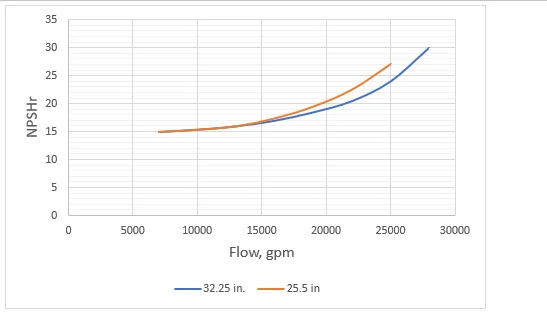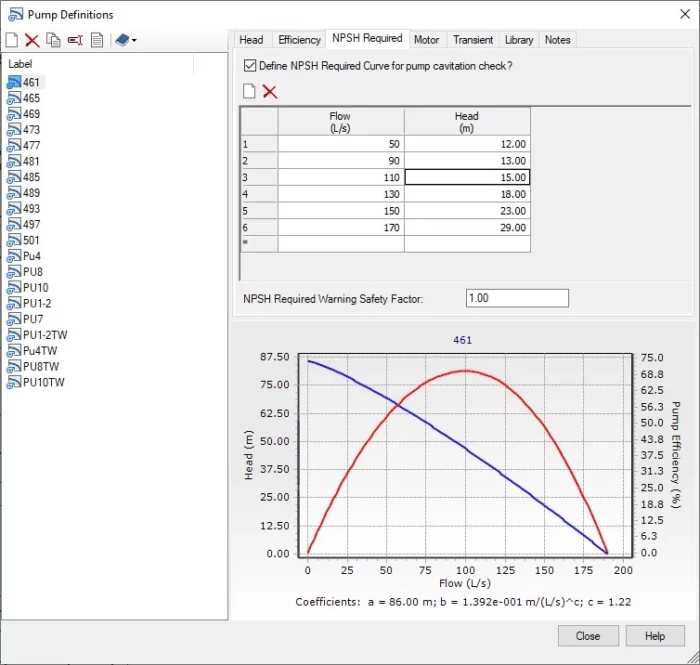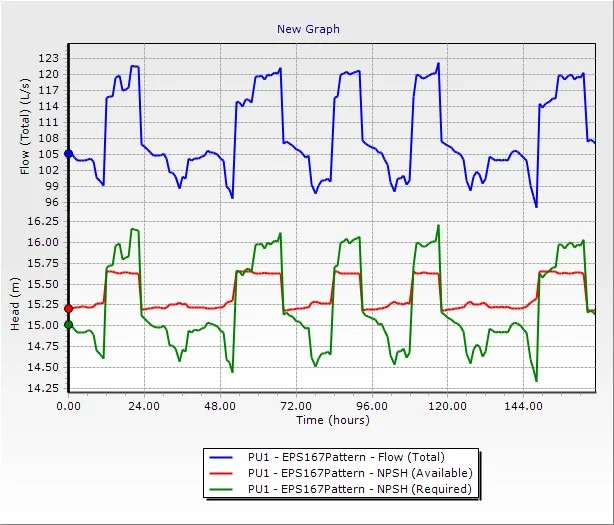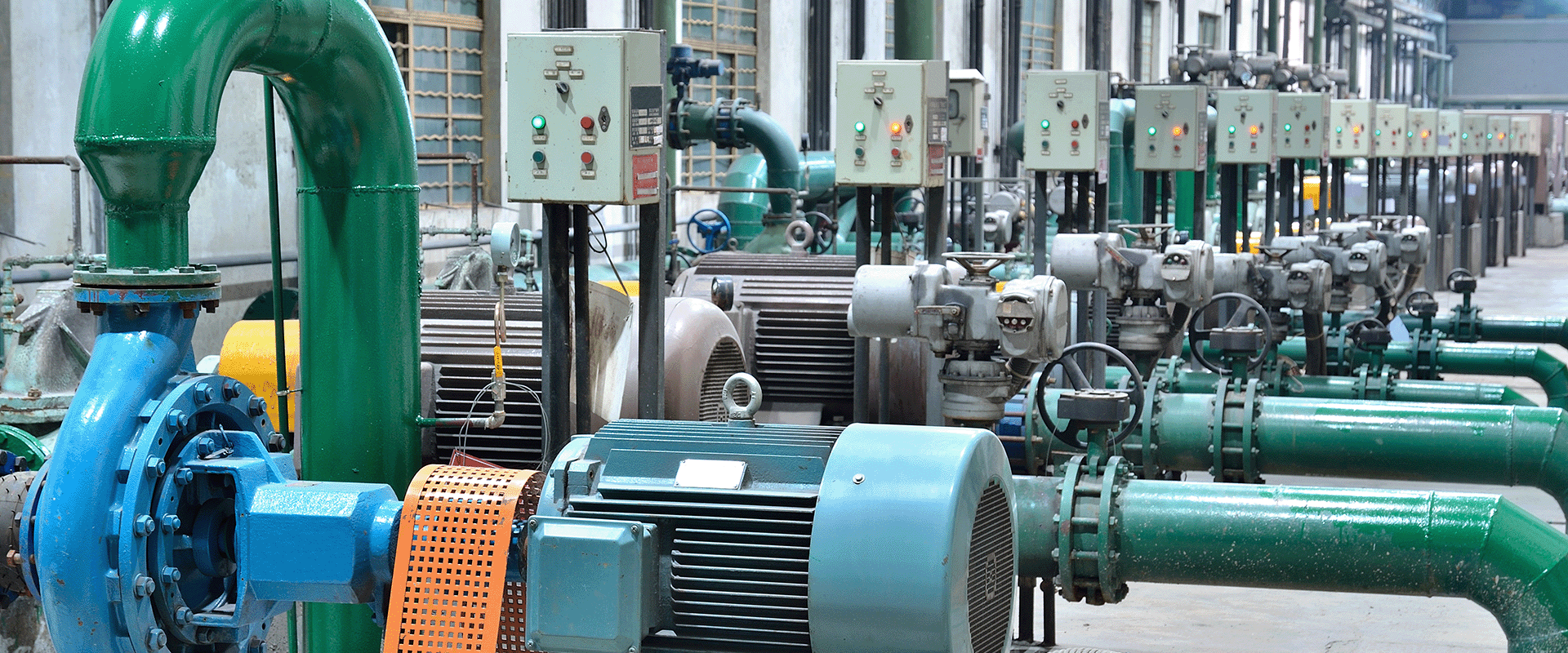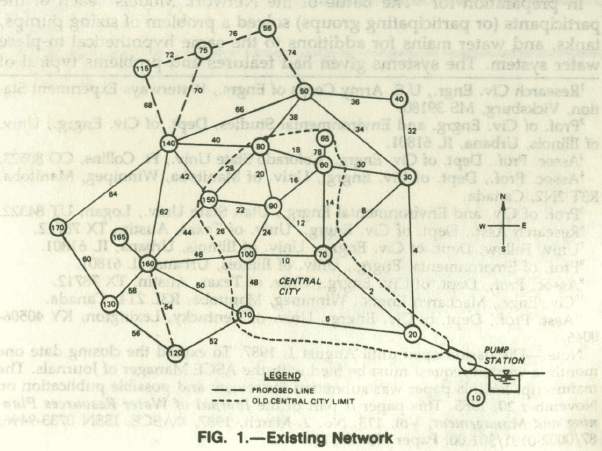I’ve been writing a lot about pumps lately, but I promise I’ll find other topics for next week. But today, I want to cover one more topic, Net Positive Suction Head (NPSH). I mentioned it in my blog on Cavitation a few weeks back.
You want to ensure that the available NPSH (NPSHa) is greater than the required NPSH (NPSHr), or the water will vaporize in the pump and damage the pump. The NPSHa is a property of the suction side of the pumping system and is calculated as
NPSHa = Hs + Hbar – Hvap
Where:
Hs = head at the inlet to pump relative to the inlet elevation
Hbar = the local barometric pressure
Hvap = the vapor pressure of water at that temperature. All of these properties have length units
Hs can be negative when the pump is located above the water surface. It can be calculated as:
Hs = Etank – Epump – hf – hm
Where:
Epump = elevation of pump inlet
Etank = elevation of water in suction side tank (or point at which pressure is measured at suction side of pump)
hf = pipe friction head loss between tank and pump
hm = minor losses between tank and pump
NPSHr is a property of the pump and is a function of the flow. This value is determined by testing done by the manufacturer and is usually presented as one of the pump characteristic curves.
Typical NPSHr curves for a given pump with two impellers show the NPSHr at the maximum and minimum impeller size.
The goal in pump selection and operation is to ensure that:
NPSHa > NPSHr
Pump experts warn that you shouldn’t just barely meet the criterion above but should exceed with a healthy margin. Why is that? It goes back to the method used to determine if cavitation occurs during the pump test.
Tests are conducted by reducing suction head (Hs) until cavitation begins. It’s difficult to measure exactly when cavitation begins as the pressure drops. By the time you hear a loud rattling sound, you are well into cavitation trouble. Testers use the fact that the output of the pump in terms of head drops off as cavitation begins.
The procedure to calculate NPSHr, established by the Hydraulic Institute, is to set the flow and pump head in the test apparatus. Measure the absolute head at the pump inlet and throttle the inflow until the pump head drops by 3% below the value with no cavitation. (A change in vibration or sound can also be used to indicate cavitation.) Record this NPSH value and flow. This is one point on the NPSHr curve. Repeat for different flow rates. By the time your pump hits the NPSHr curve, you already have a cavitation problem.
What can you do if you don’t have sufficient NPSHa? You have a variety of steps you can use to increase the suction head, including:
- Lower the elevation of the pump impeller
- Raise the suction tank water level
- Increase the size of the suction pipe to minimize head loss
- Minimize the minor losses in the suction piping
- Select a pump with a lower NPSH
- Install an “inducer,” which is a small impeller before the main impeller
- Use a smaller impeller with lower flow
- Change impeller type
- If variable speed pump, lower the speed
- Use a submersible pump
In OpenFlows WaterGEMS, the NPSHr curve is defined in Components > Pump Definition > NPSHr tab.
The NPSHa is calculated for every pump at every time step.
NPSH values are somewhat tricky and are not always intuitively obvious. When flow through a pump increases, usually the suction head drops (NPSHa decreases), and NPSHr increases. The example below illustrates this issue.
In this case, at time zero, two pumps are running in the station and NPSHa > NPSHr (red line above green). At about hour 12, the second pump turns off, and only the first pump continues running. This increases the flow through the remaining pump (PU1) and increases NPSHa since there is less head loss in the suction piping. However, since the flow increases, NPSHr also increased, and now NPSAa is no longer adequate even though NPSHa increased (red line below green).
Having a tool like OpenFlows WaterGEMS takes the guesswork out of NPSH calculations.
On December 1-2, Bentley conducted its Year in Infrastructure and Going Digital Awards virtual event. There were some high-quality presentations at this conference, and the highlights of the water awards are entertaining. You can watch the recording of the conference sessions on-demand.
If you want to contact me (Tom), you can email [email protected].
Want to learn more from our resident water and wastewater expert?
Join the Dr. Tom Walski Newsletter today!


